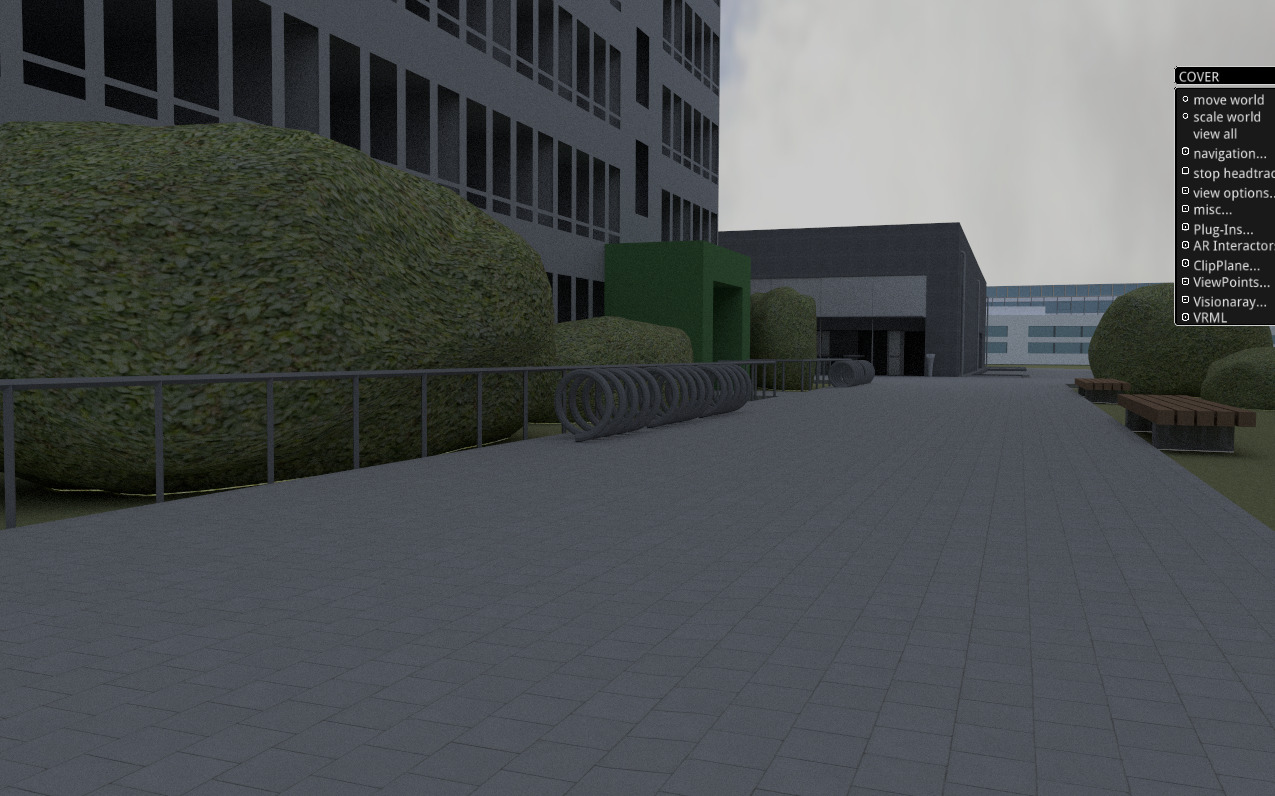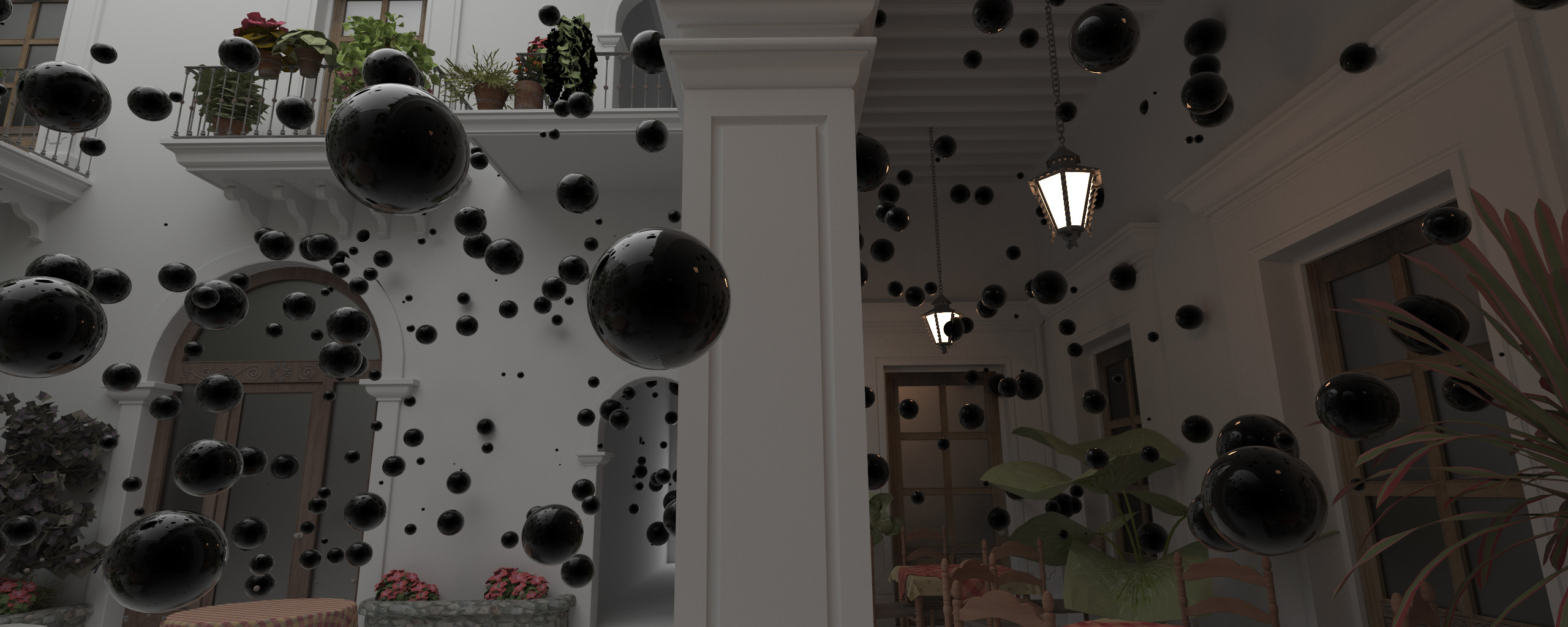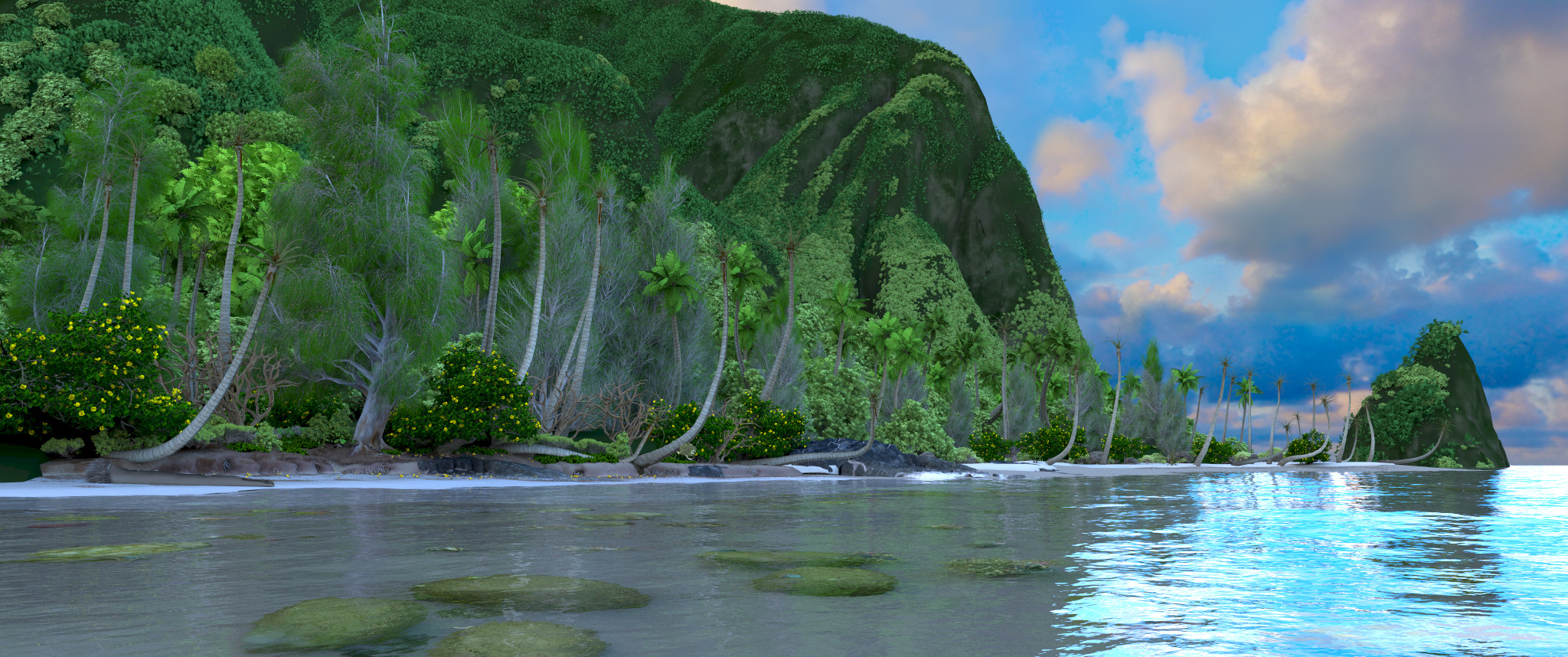Home
I'm a senior researcher and computer science lecturer at the University
of Cologne, specializing in high performance computing, computer
graphics and 3D scientific visualization. My research is centered
around real-time ray tracing, a technique to create virtual images from
3D data aiming at high realism and the simulation of light transport in
a physically inspired way. Here's a bunch of images that involve ray
tracing to some extent and that I used in my projects and publications.
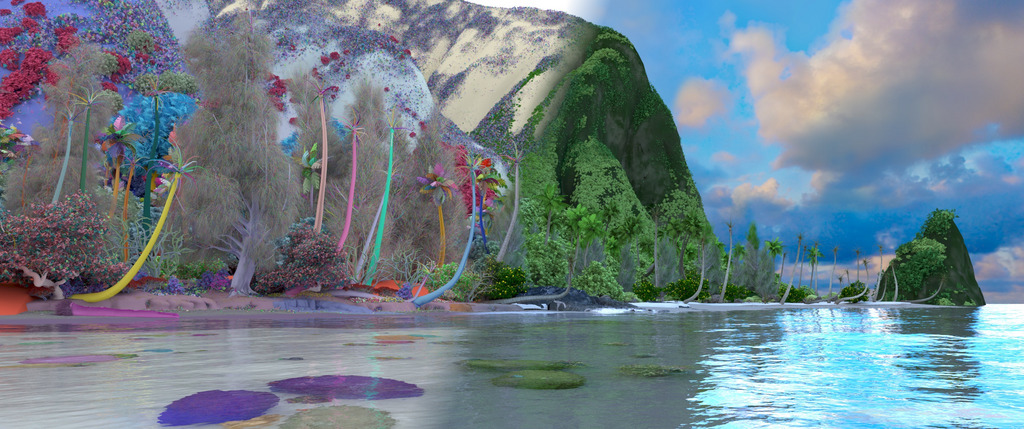
Moana Island Scene, 3D scene by Walt Disney Animation Studio

Visualization of a molecular cloud; simulation data courtesy of Daniel Seifried, UoC
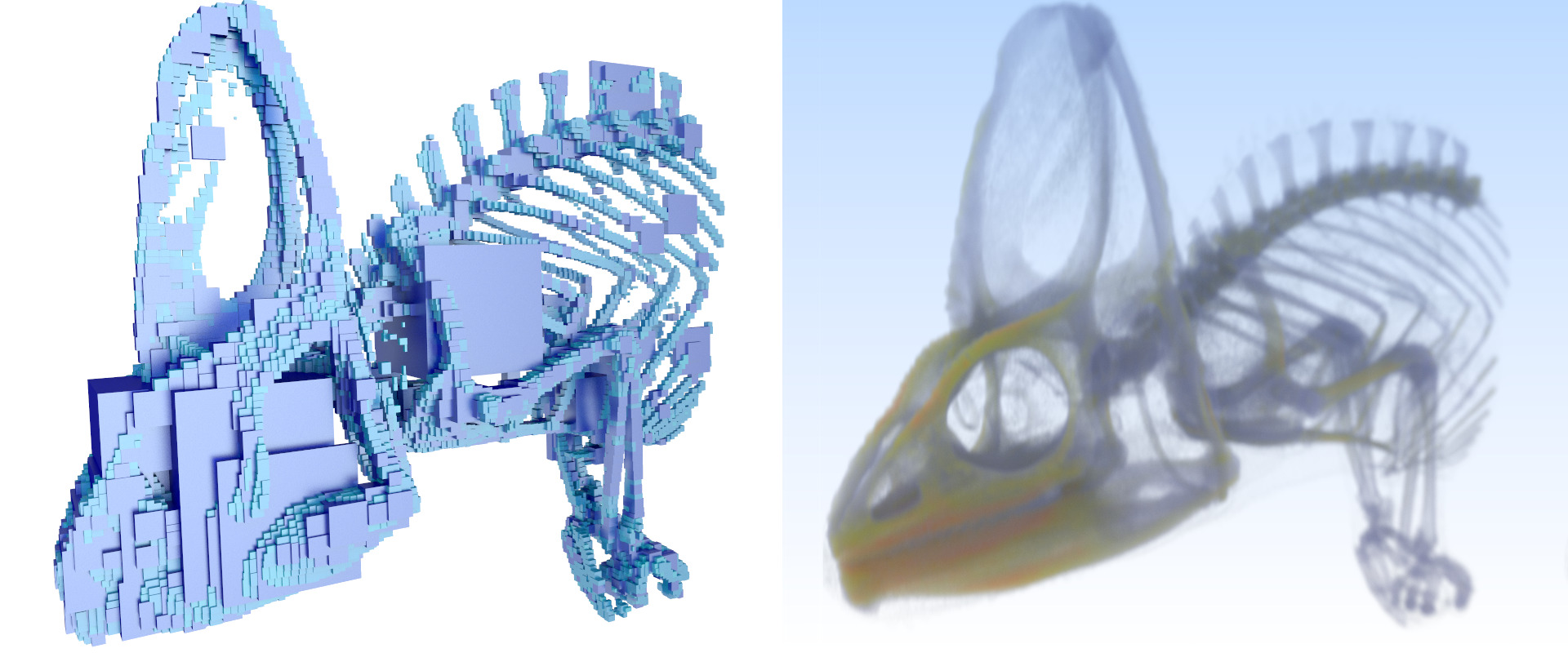
Volume rendering with empty space skipping

Photorealistic hair rendering with ray-traced spline curves
I'm also the author of a number of open source projects that have to do
with ray tracing and direct volume rendering. Find more details about
those on the
Projects page on this
website. And I'm randomly blogging about my research topics under
http://blog.szellmann.de.
Memberships and Services
Reviewing / Committee memberships
I'm on the international program committee of the IEEE VIS 2021 conference and
was a regular reviewer and IPC member at the Eurographics Symposium for Parallel
Graphics and Visualization (EGPGV): committee member in 2020 and 2021, reviewing
in 2019.
In addition, I also regularly review papers for the IEEE VR conferences, for IEEE
Access, and for several smaller international journals and conferences.
Teaching
I'm currently teaching the master students' lecture
Architecture and Programming Models for GPUs
and Coprocessors (APGC) at the University of Cologne:
2022 Lecture (redirects to the University of Cologne).
I designed this lecture from scratch in 2018 and am now holding it for the 4th time.
In a regular semester, it is comprised of 2x90 minutes lecture + 90 minutes exercises per week ("6 SWS").
The main topics are:
- Processor architecture.
- Parallel algorithms and parallel programming.
- Computer graphics (rasterization, ray tracing).
- Graphics pipeline in hardware.
- GPGPU programming.
Here's a link to a youtube channel with screen recordings from 2021:
https://www.youtube.com/channel/UCH57k49l-E_nqkaXH4HZQug.
Direct link to the lecture's playlist on youtube:
https://www.youtube.com/watch?v=Ehaw8Xo0pwY&list=PL8GFXx31a3wrgwjvi2FIS4-b95XFevAyj.
More material and links to past semesters can be found on the institute's websites:
2021,
2019 and
2018.
I've also regularly supervised seminars
on computer graphics and GPGPU programming, as well as masters / diploma theses on topics such
as FPGA programming, volume rendering and empty space skipping, reconstruction filters, etc.
Projects
As a researcher I work on a couple of (mostly software) projects that
are related to 3D rendering, high performance computing, real-time
scientific visualization etc. The most notable projects I'm currently
collaborating on are:
DFG Grant (starting in 2022)
"Visualization of Large, Time-Varying Adaptive Mesh Refinement Data Sets (VTV-AMR)"
NEW:
project website
I was able to raise external funding with the DFG (project no 456842964)
to support my research on time-varying AMR visualization. I'm planning
to start working on this at some point in 2022. More information to
follow. The work will be based off of the ExaBrick paper (see below, and also
this external website at the UoC:
https://vis.uni-koeln.de/forschung/software-exabrick-amr-rendering-framework).
"OWL" Projects
https://github.com/owl-project
That's a bunch of projects I collaborate on with researchers from SCI
(Scientific Computing and Imaging Insitute, University of Utah) and
from NVIDIA. OWL is the "OptiX 7 Wrappers Library" (see
this blog post by Ingo Wald). Some notable projects where we used
OWL to make use of hardware-accelerated ray tracing are:
ExaBrick

ExaBrick is an optimized AMR (adaptive mesh refinement) visualization
data structured for large simulation data that is optimized for NVIDIA
GPUs with hardware ray tracing cores. See our paper: I. Wald, S. Zellmann, W. Usher, N. Morrical, U. Lang, V. Pascucci (2020),
"Ray Tracing Structured AMR Data Using ExaBricks" at IEEE VIS, as well as
the software repository:
https://github.com/owl-project/owlExaBrick
owlTubes
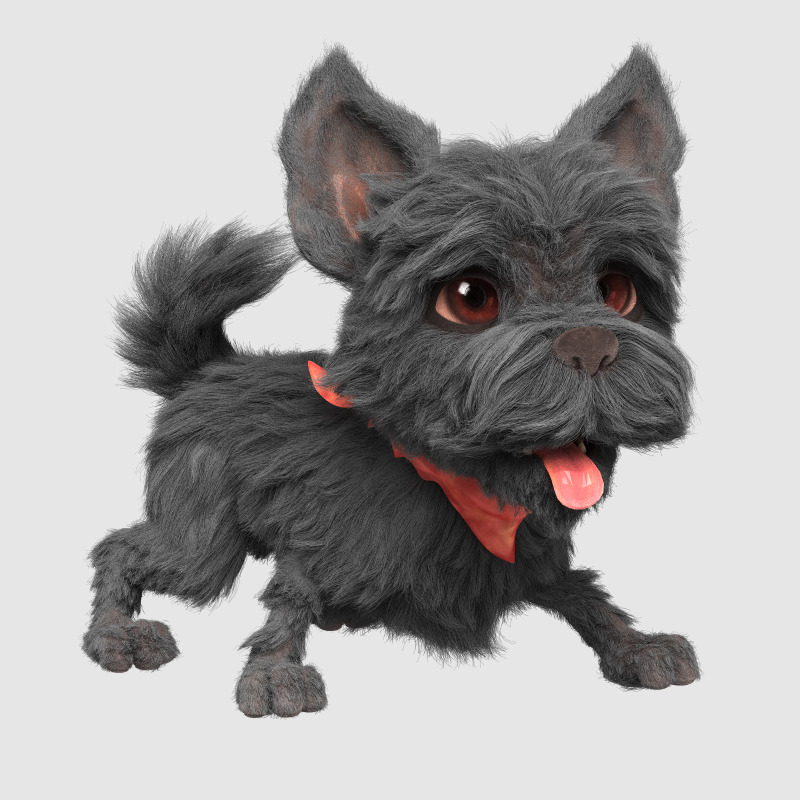
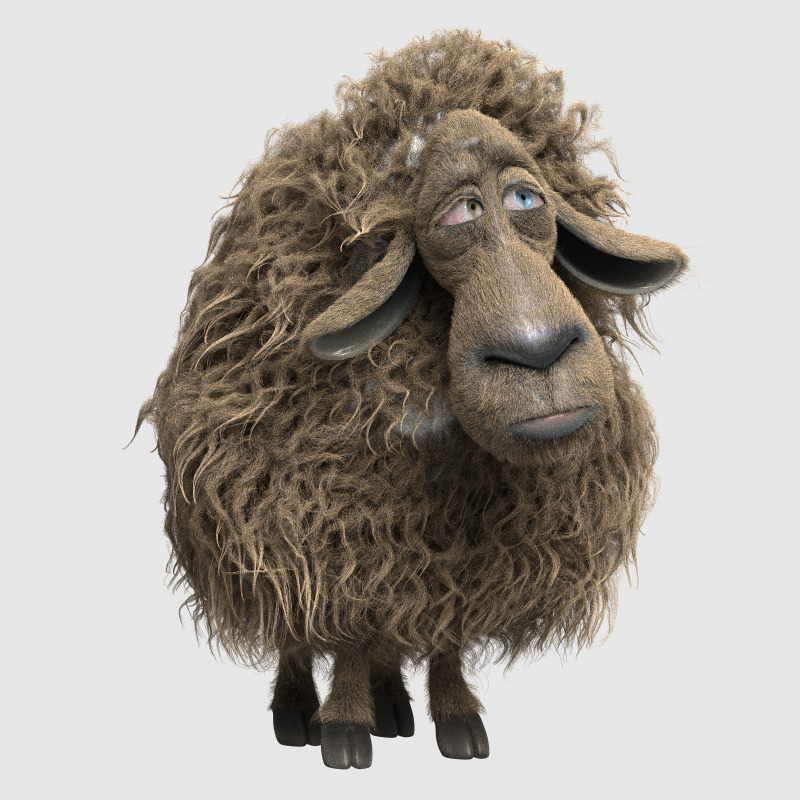
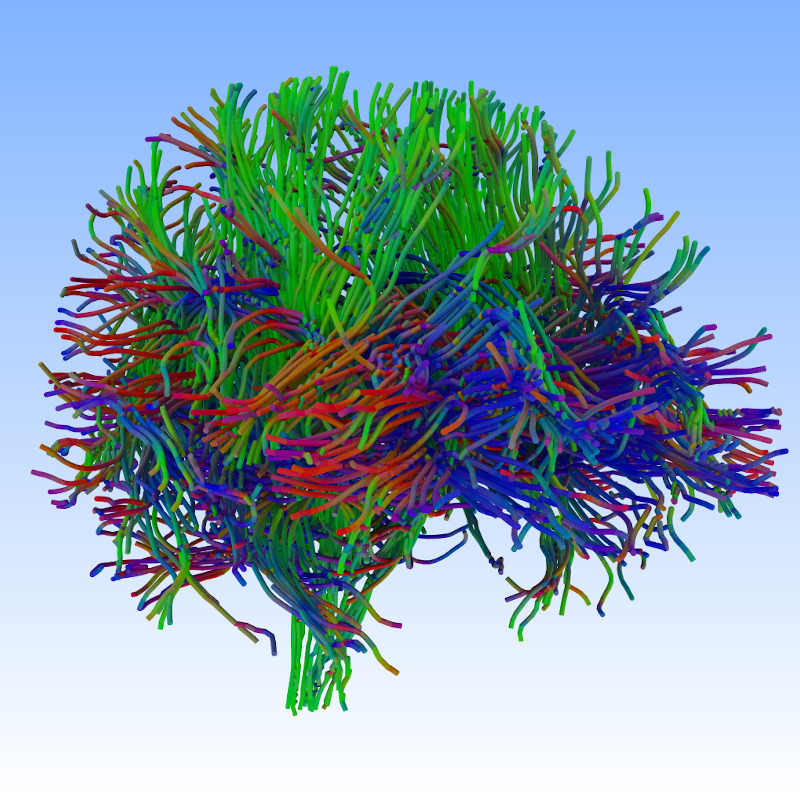
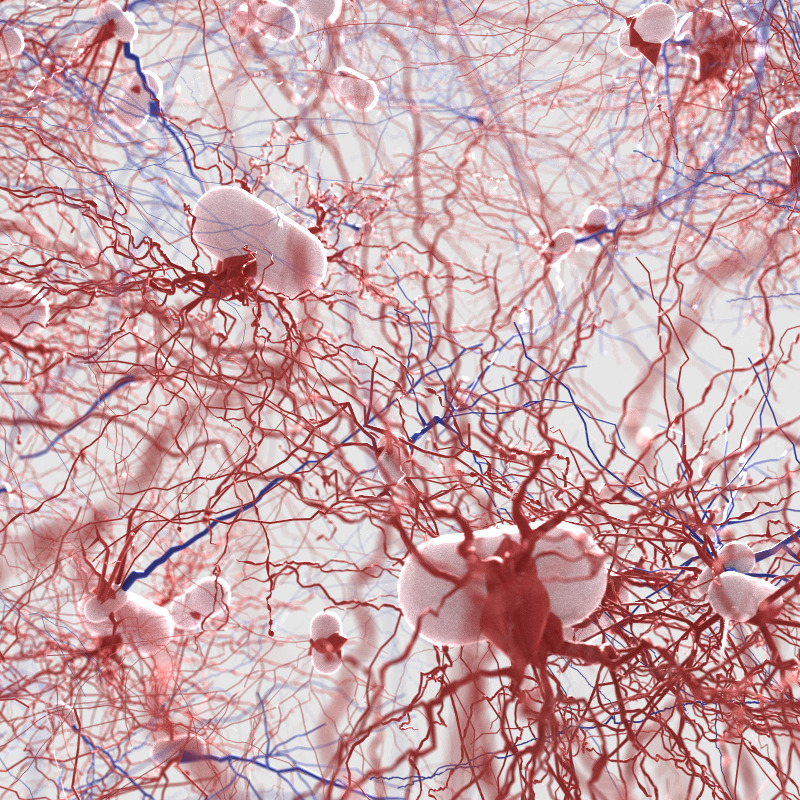
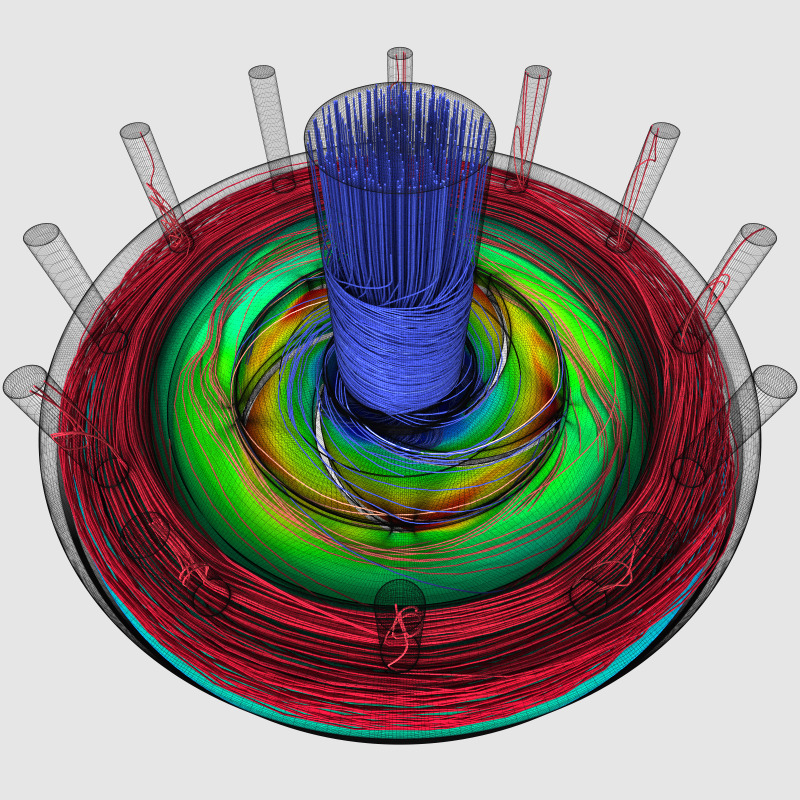
That was a paper project for High Performance Graphics 2020, where we
used OptiX hardware instancing to trick the ray tracing BVH into
performing an OBB (oriented bounding box) test to safe on context switches
between RT cores and shading units.
RTX-Accelerated Graph Drawing

Here we used ray tracing hardware to perform radius searh queries in
large 2D graphs to compute layouts using the Fruchterman-Reingold
algorithm. That project culminated in the VIS 2020 short paper: S.
Zellmann, M. Weier, I. Wald (2020), "Accelerating Force-Directed Graph
Drawing with RT Cores". Also check out my blog post on this algorithm:
http://blog.szellmann.de/2020/10/17/graph-drawing-with-rtx/
fakeOwl
That's an attempt to provide an implementation of the OWL interface
on the CPU. Very experimental, source code can be found under:
https://github.com/szellmann/fakeOwl
Other
Other projects are focused on glyph visualization or on large data
rendering. For more details, check out the "OWL" project website and
the blog post mentioned above.
Visionaray
https://github.com/szellmann/visionaray
Visionaray is a C++ template library providing a bunch of different
algorithms and data structures related to ray tracing that are highly
optimized for x86 and ARM CPUs as well as NVIDIA GPUs. Here are some
images that were rendered with Visionaray. Click to enlarge (opens a
new tab).
The most important Visionaray-related paper is: S. Zellmann, D.
Wickeroth, U. Lang (2017), "Visionaray: A Cross-Platform Ray Tracing
Template Library", which was presented at SEARIS, a workshop at IEEE VR
2017. Visionaray was used in numerous different projects, for example
the instancing / large 3D model project from EGPGV 2020:
https://github.com/ukoeln-vis/instanceviewer or the VMV 2017
project on compile time polymorphic ray tracing:
https://github.com/ukoeln-vis/ctpperf.
Volkit
https://github.com/volkit/volkit
Volkit is a relatively new library (still under heavy development) implementing
algorithms centered around 3D volumetric data. More to come very soon!
Publications
The following is a
relatively well-maintained list of my
peer-reviewed scientific publications. Also see my
Google Scholar profile
or my profile on
ResearchGate. A link to my PhD thesis on "High Performance Volume
Rendering" (Cologne 2014, primary advisor: Prof. Ulrich Lang) can be found here:
https://kups.ub.uni-koeln.de/5727/.
2025
-
S. Zellmann, I. Wald (2025),
"From Soup to Bricks: Fast Clustering of Fine-Grained AMR Hierarchies for Rendering on GPUs".
The 15th IEEE Symposium on Large Data Analysis and Visualization (LDAV 2025)
Author version
-
S. Zellmann, M. Jaros, J. Amstutz, I. Wald (2025),
"GPU Volume Rendering with Hierarchical Compression Using VDB".
Eurographics Symposium on Parallel Graphics and Visualization (EGPGV 2025)
Link
-
A. Sahistan, S. Zellmann, N. Morrical, V. Pascucci, I. Wald (2025),
"Multi-Density Woodcock Tracking: Efficient & High-Quality Rendering for Multi-Channel Volumes".
Eurographics Symposium on Parallel Graphics and Visualization (EGPGV 2025)
Author Version
2024
-
I. Wald, S. Zellmann, J. Amstutz, Q. Wu, K. Griffin, M. Jaros, S. Wesner (2024),
"Standardized Data-Parallel Rendering Using ANARI".
The 14th IEEE Symposium on Large Data Analysis and Visualization (LDAV 2024)
Preprint (Arxiv)
-
A. Sahistan, S. Demirci, I. Wald, S. Zellmann, J. Barbosa, N. Morrical, U. Güdükbay (2024),
Early access: "Visualization of Large Non-Trivially Partitioned Unstructured Data with Native Distribution on High-Performance Computing Systems".
To appear in a future issue of Transactions on Visualization and Computer Graphics (TVCG).
Link
-
S. Zellmann, Q. Wu, A. Sahistan, K.-L. Ma, I. Wald (2024),
"Beyond ExaBricks: GPU Volume Path Tracing of AMR Data".
Computer Graphics Forum, Vol. 43 (3), 2024.
Link
2023
-
S. Zellmann, S. Demirci, U. Güdükbay (2023),
"Visual Analysis of Large Multi-Field AMR Data on GPUs Using Interactive Volume Lines".
2023 IEEE Visualization Conference (VIS)
Author version Link
-
N. Morrical, S. Zellmann, A. Sahistan, P. Shriwise, V. Pascucci (2023),
"Attribute-Aware RBFs: Interactive Visualization of Time Series Particle Volumes Using RT Core Range Queries".
IEEE Transactions on Visualization and Computer Graphics, Vol. 30 (1), 2024. (IEEE Visualization 2023).
Link Author version Supplemental material
-
I. Wald, M. Jaros, S. Zellmann (2023),
"Data Parallel Multi-GPU Path Tracing using Ray Queue Cycling".
Computer Graphics Forum, Vol. 42 (8), 2023.
-
J. Sarton, S. Zellmann, S. Demirci, U. Güdükbay, W. Alexandre-Barff, L. Lucas, J.M. Dischler, S. Wesner, I. Wald (2023),
"State-of-the-art in Large-Scale Volume Visualization Beyond Structured Data".
Computer Graphics Forum, Vol. 42 (3), 2023 (Proceedings of Eurographics Conference on Visualization (EuroVis) 2023)
-
S. Zellmann, Q. Wu, K.-L. Ma, I. Wald (2023),
"Memory-Efficient GPU Volume Path Tracing of AMR Data Using the Dual Mesh".
Computer Graphics Forum, Vol. 42 (3), 2023 (Proceedings of Eurographics Conference on Visualization (EuroVis) 2023)
Author version Author version (high res)
2022
-
S. Zellmann, I. Wald, J. Barbosa, S. Demirci, A. Sahistan, U. Güdükbay (2022),
"Hybrid Image-/Data-Parallel Rendering Using Island Parallelism".
The 12th IEEE Symposium on Large Data Analysis and Visualization (LDAV 2022)
Link
-
S. Zellmann, I. Wald, A. Sahistan, M. Hellmann, W. Usher (2022),
"Design and Evaluation of a GPU Streaming Framework for Visualizing Time-Varying AMR Data".
Eurographics Symposium on Parallel Graphics and Visualization (EGPGV 2022)
PDF Link
-
S. Zellmann, D. Seifried, N. Morrical, I. Wald, W. Usher, J.P. Law-Smith, S. Walch-Gassner, A. Hinkenjann (2022),
"Point Containment Queries on Ray Tracing Cores for AMR Flow Visualization".
Computing in Science and Engineering (CiSE), Special Issue: Hardware-Accelerated Ray Tracing for Scientific Applications (Mar/Apr 2022)
Link
2021
-
S. Zellmann (2021),
"Remote Volume Rendering with a Decoupled, Ray-Traced Display Phase".
Smart Tools and Applications in Graphics (STAG 2021)
Link
-
A. Sahistan, S. Demirci, N. Morrical, S. Zellmann, A. Aman, I. Wald, U. Güdükbay (2021),
"Ray-traced Shell Traversal of Tetrahedral Meshes for Direct Volume Visualization".
IEEE Visualization Short Papers (VIS 2021)
PDF Link
-
I. Wald, N. Morrical, S. Zellmann (2021),
"A Memory Efficient Encoding for Ray Tracing Large Unstructured Data".
IEEE Visualization (VIS 2021)
PDF Link
-
I. Wald, S. Zellmann, N. Morrical (2021),
"RTX-Accelerated Empty Space Skipping using Triangulated Active Region Boundary Geometry".
Eurographics Symposium on Parallel Graphics and Visualization (EGPGV 2021)
PDF Link
-
N. Morrical, S. Zellmann (2021),
"Inverse Transform Sampling using Ray Tracing Hardware".
Ray Tracing Gems II (book chapter).
Link
2020
-
I. Wald, S. Zellmann, W. Usher, N. Morrical, U. Lang, V. Pascucci (2020),
"Ray Tracing Structured AMR Data Using ExaBricks".
IEEE Visualization, TVCG / SciVis Papers (VIS 2020)
PDF Link
-
S. Zellmann, M. Weier, I. Wald (2020),
"Accelerating Force-Directed Graph Drawing with RT Cores".
IEEE Visualization, Shortpapers (VIS 2020)
PDF Link
-
I. Wald, N. Morrical, S. Zellmann, L. Ma, W. Usher, T. Huang, V. Pascucci (2020),
"Using Hardware Ray Transforms to Accelerate Ray/Primitive Intersections for Long, Thin Primitive Types".
High Performance Graphics (HGP 2020)
PDF Link
-
S. Zellmann, N. Morrical, I. Wald, V. Pascucci (2020),
"Finding Efficient Spatial Distributions for Massively Instanced 3-d Models".
Eurographics Symposium on Parallel Graphics and Visualization (EGPGV 2020)
** HONORABLE MENTION AWARD ** PDF Link
-
S. Zellmann, M. Aumüller, N. Marshak, I. Wald (2020),
"High-Quality Rendering of Glyphs Using Hardware-Accelerated Ray Tracing".
Eurographics Symposium on Parallel Graphics and Visualization (EGPGV 2020)
PDF Link
2019
-
S. Zellmann, D. Meurer, U. Lang (2019),
"Hybrid Grids for Sparse Volume Rendering".
IEEE VIS 2019, Vancouver, Canada, October 20-25, 2019
PDF Link
-
S. Zellmann, J.P.. Schulze, U. Lang (2019),
"Binned k-d Tree Construction for Sparse Volume Data on Multi-Core and GPU Systems".
IEEE Transactions on Visualization and Computer Graphics (TVCG), Early Access.
Link
-
S. Zellmann, M. Hellmann, U. Lang (2019),
"A Linear Time BVH Construction Algorithm for Sparse Volumes".
IEEE Pacific Visualization Symposium (PacificVis 2019), Bangkok, Thailand, April 23-26, 2019
PDF Link
2018
-
S. Zellmann, J.P. Schulze, U. Lang (2018),
"Rapid k-d Tree Construction for Sparse Volume Data".
Eurographics Symposium on Parallel Graphics and Visualization (EGPGV 2018), Brno, Czech Republic, June 4, 2018
** BEST PAPER AWARD ** PDF Link Bibtex
2017
-
S. Zellmann, U. Lang (2017),
"C++ Compile Time Polymorphism for Ray Tracing".
Proceedings of the 22nd Symposium on Vision, Modelling and Visualization (VMV 2017), Bonn, Germany, September 25-27, 2017
PDF Link Bibtex
-
S. Zellmann, D. Wickeroth, U. Lang (2017),
"Visionaray: A Cross-Platform Ray Tracing Template Library".
Proceedings of the 10th Workshop on Software Engineering and Architectures for Realtime Interactive Systems (IEEE SEARIS 2017), Los Angeles, California, USA, March 19, 2017
PDF Link
-
S. Zellmann, M. Hoevels, U. Lang (2017),
"Ray traced volume clipping using multi-hit BVH traversal".
Proceedings of Visualization and Data Analysis (VDA), Burlingame, California, USA, January 29-February 2, 2017. DOI: 10.2352/ISSN.2470-1173.2017.1.VDA-392
** BEST PAPER AWARD ** PDF Link Bibtex
2015
-
D. Hoffmeister, S. Zellmann, A. Pastoors, M. Kehl, P. Cantalejo, J. Ramos, G. C. Weniger, G. Bareth (2015),
"The investigation of the Ardales Cave, Spain - 3D documentation, topographic analyses, and lighting simulations based on terrestrial laser scanning".
Archaeological Prospection. DOI: 10.1002/arp.1519
Link Bibtex
-
S. Zellmann, Y. Percan, U. Lang (2015),
"Advanced texture filtering: a versatile framework for reconstructing multi-dimensional image data on heterogeneous architectures".
Proceedings of Visualization and Data Analysis (VDA), San Francisco, California, USA, February 8-12, 2015
Link Bibtex
2014
-
Y. Percan, S. Zellmann, U. Lang (2014),
"Asymptotic error of cubic B-spline interpolation using prefiltering".
Springer Numerical Algorithms, DOI: 10.1007/s11075-014-9941-x
Link PDF Bibtex
-
D. Hoffmeister, S. Zellmann, K. Kindermann, A. Pastoors, U. Lang, O. Bubenzer, G. C. Weniger, G. Bareth (2014),
"Geoarchaeological site documentation and analysis of 3D data derived by terrestrial laser scanning".
ISPRS Annals of Photogrammetry, Remote Sensing and Spatial Information Sciences, II-5, pp. 173-179, 2014
Link PDF Bibtex
2013
-
S. Zellmann, U. Lang (2013),
"A Comparison of GPU Box-Plane Intersection Algorithms for Direct Volume Rendering".
Proceedings of the 14th IASTED International Conference on Computer Graphics and Imaging (CGIM),
Innsbruck, Austria, February 12-14, 2013
Bibtex
2012
-
S. Zellmann, U. Lang (2012),
"A Software Architecture for Distributed Volume Rendering on HPC Systems".
Proceedings of the 24th IASTED International Conference on Parallel and Distributed Computing and Systems (PDCS),
Las Vegas, Nevada, USA, November 12-14, 2012
Bibtex
-
S. Zellmann, M. Aumüller, U. Lang (2012),
"Image-Based Remote Real-Time Volume Rendering - Decoupling Rendering from View Point Updates".
Proceedings of the ASME 2012 International Design Engineering Technical Conferences & Computers and Information in Engineering Conference (IDETC/CIE),
Chicago, Illinois, USA, August 12-15, 2012
Bibtex

















